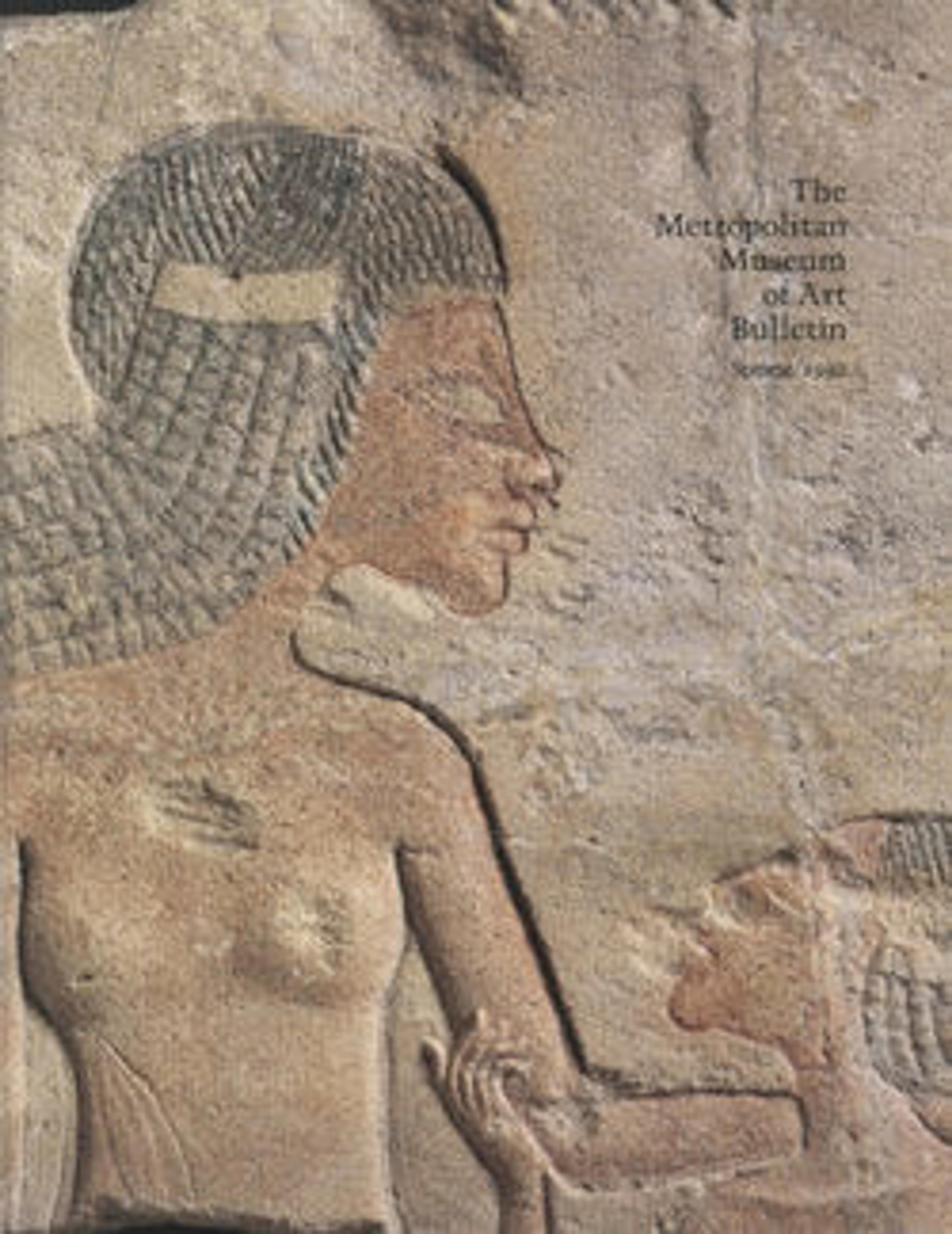Ingot with Hittite hieroglyphs
Hittite scribes wrote both in cuneiform script (borrowed from Mesopotamia) and in hieroglyphs, a local development that continued after the end of the Hittite empire into the Neo-Hittite kingdoms. Unfortunately, the hieroglyphs on this silver ingot are not legible, so the writing cannot help us determine the ingot's function.
It has been suggested that the ingot belonged to a silversmith, who might have used it to make or repair jewelry, sculpture, or drinking vessels or other ceremonial containers, such as the stag-headed cup (MMA 1989.281.10) . On the other hand, we know that in the earlier Assyrian Trading Colony period specific weights of Anatolian silver were traded for the goods imported from Assyria. Perhaps this ingot, or pieces from it, were weighed and used as currency in Hittite times, since coins as we know them were only invented in the mid-seventh century B.C.
It has been suggested that the ingot belonged to a silversmith, who might have used it to make or repair jewelry, sculpture, or drinking vessels or other ceremonial containers, such as the stag-headed cup (MMA 1989.281.10) . On the other hand, we know that in the earlier Assyrian Trading Colony period specific weights of Anatolian silver were traded for the goods imported from Assyria. Perhaps this ingot, or pieces from it, were weighed and used as currency in Hittite times, since coins as we know them were only invented in the mid-seventh century B.C.
Artwork Details
- Title:Ingot with Hittite hieroglyphs
- Period:Hittite Empire
- Date:ca. 14th–13th century BCE
- Geography:Central Anatolia
- Culture:Hittite
- Medium:Silver
- Dimensions:3.07 x 3.54 in. (7.8 x 8.99 cm)
- Credit Line:Gift of Norbert Schimmel Trust, 1989
- Object Number:1989.281.16
- Curatorial Department: Ancient West Asian Art
More Artwork
Research Resources
The Met provides unparalleled resources for research and welcomes an international community of students and scholars. The Met's Open Access API is where creators and researchers can connect to the The Met collection. Open Access data and public domain images are available for unrestricted commercial and noncommercial use without permission or fee.
To request images under copyright and other restrictions, please use this Image Request form.
Feedback
We continue to research and examine historical and cultural context for objects in The Met collection. If you have comments or questions about this object record, please contact us using the form below. The Museum looks forward to receiving your comments.
